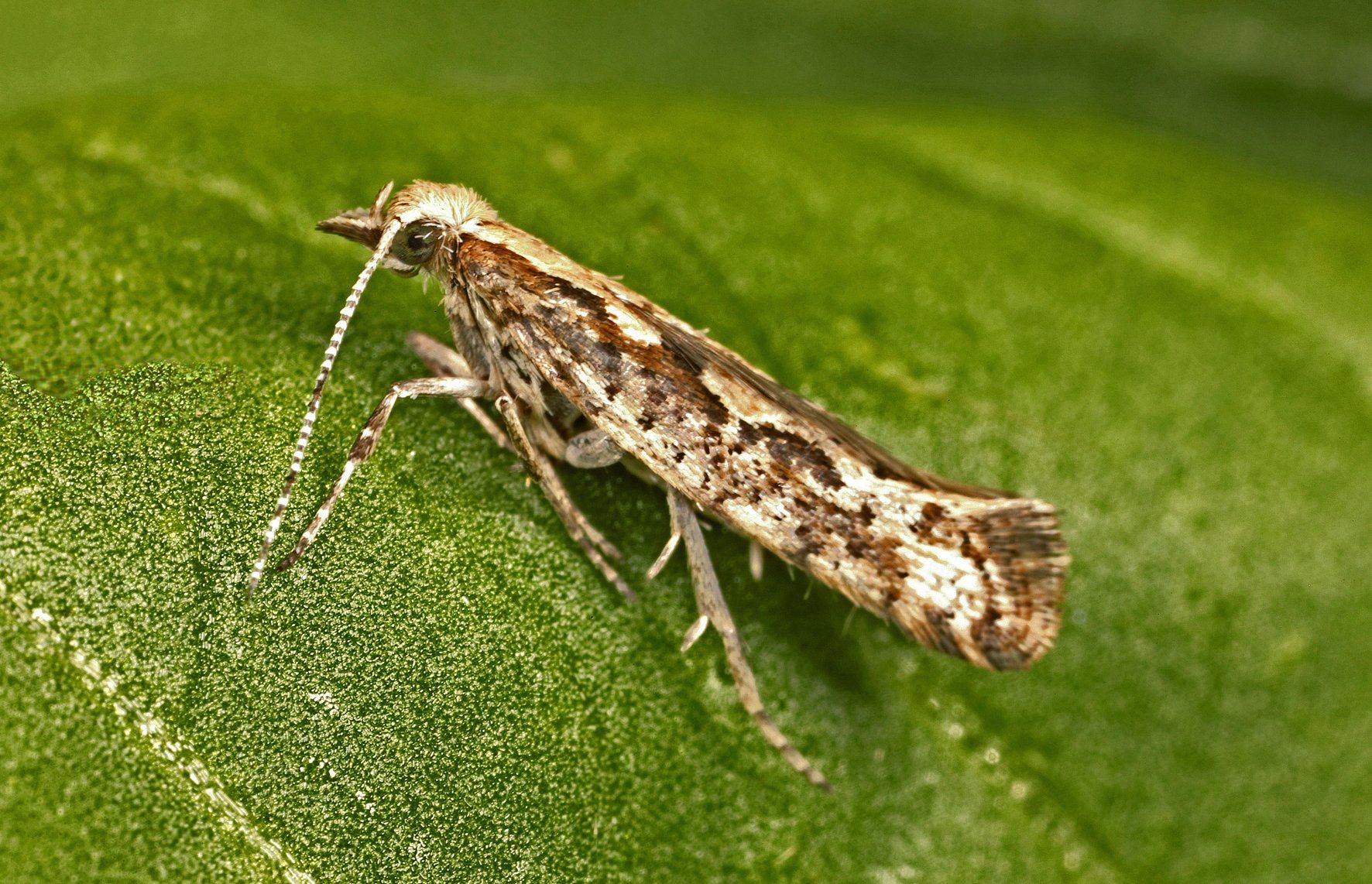1MG FlippingBooks
Diamondback moth traced back to South America
Elizabeth Gracie

Diamond back moth, Plutella xylostella, Photo credit: David McClenaghan
The diamondback moth has since spread on a global scale and is considered one of agriculture’s worst pests.
The study, published in Nature Communications, traced the origin and historical patterns of migration of the diamondback moth. Researchers hope that by understanding these patterns, they can predict future movements of the moth to protect food security globally.
To achieve their goal, researchers analysed the genomes of more than 530 diamondback moths collected from 114 locations across 55 countries.
Charles Sturt University’s Professor Geoff Gurr participated in the study, and hopes it will lead to new insight on how the moth became so prevalent worldwide.
“Every year more than $5bn is lost in production and control crops in the agriculture industry,” said Gurr.
“The diamondback moth is extremely adept at developing resistance to pesticides which makes chemical control difficult.”
Human movement has also greatly aided the migration of the diamondback moth to new geographical spaces where it has thrived.
“Along the way, it has used its adaptive capacity to cope with the new climates and plants it encountered,” says Gurr.
The team is now looking to South America to learn more about how to combat the pest.
“Now that we know where the diamondback moth originally came from, we can focus our energy on looking in the right place for better natural predators and parasites to help give us control of this devastating pest”, Gurr notes.
This study is “one of the most in-depth genetic analyses of any type of living organisms ever”, according to the Charles Sturt University’s Graham Centre for Agricultural Innovation.
“Analysing the full genome, rather than just specific regions is an expensive undertaking especially when dealing with hundreds of insects and large amounts of travel,” says Gurr.
This globally significant research has illustrated the severity of the threat the diamondback moth poses to the agriculture industry and will assist researchers in finding better control options now that the origins of the moth have been pinned down.
NEWS

Prodoz, a Proudly Australian and family-owned agribusiness, based in Melbourne, is strengthening its positions as national/international leader in advanced crop – science solutions through a growing portfolio of global innovation partners and a distribution footprint supported by all major distributors - includes Nutrien Ag, Elders, Lindsay Rural and Independent Rural stores.

Trace minerals are required for optimal growth, reproduction, and immunity. Optimising trace mineral status relying solely on oral supplements across a herd may fail because of variation in individual intake and reduced absorption due to antagonism of other ration components and minerals. The use of injectable trace mineral supplements has been associated with positive reproductive outcomes including improved conception rate, increased odds of pregnancy and greater final in calf rate. A study conducted on 2,168 dairy cows, administered injectable trace minerals, four weeks prior to calving and again four weeks prior to the start of mating showed treated animals had a 3.3 per cent greater final in-calf rate, and a reduced time from start of mating to conception, compared to control animals 1 . The Importance of B12 Dr Carl Eden, Technical Services Veterinarian with Boehringer Ingelheim says “Vitamin B12 is sometimes referred to as a ‘super vitamin’ because it is only required in very small amounts but vital to many essential metabolic pathways. However, demand for B12 can vary considerably during the year and we see serum levels of B12 fall at critical times, such as the first few months after calving.” Vitamin B12 contains cobalt, so deficiency in cobalt can lead to deficiency in vitamin B12 because ruminants get most of their B12 as a byproduct of ruminal fermentation where the bacteria in their rumen assemble B12 from cobalt for use by the cow. Sub-optimal trace mineral and vitamin B12 status at calving, mating, and drying off has been shown to negatively impact growth, reproduction, and immunity. Using a trace mineral injectable containing vitamin B12 can improve trace mineral and vitamin B12 status at these critical times. Marks-Min with Vitamin B12 – The Evidence In the largest trace element study to date, Marks-Min Injectable Trace Mineral with Vitamin B12 demonstrated remarkable results when compared to a reference trace mineral injection. “Given the differences between Marks-Min and other products on the market, we wanted to generate a compelling data set to demonstrate how effective it was compared to the pioneer product. We entrusted this work to a third-party research company” says Dr Eden. “We chose farms that were at the top of their game from a reproductive perspective. We made sure that the farms had no evidence of trace element or vitamin B12 deficiencies or excess.” Across all outcomes of interest, Marks-Min demonstrated clear non-inferiority when compared to the reference product. Outcomes measured included submission, pregnancy and conception rates, and six week in-calf rate. Marks-Min demonstrated it is highly suited as an alternative treatment to the reference product. Reference: 1. Hawkins, D., and B. V. S. Franklin. New Zealand Dairy Veterinarians Newsletter 24 (2007): 12-16 Company website: livestockfirst.com.au Company email address: CustomerCare.Australia@boehringer-ingelheim.com Company video: https://vimeo.com/1138807630?fl=pl&fe=cm














